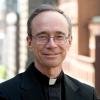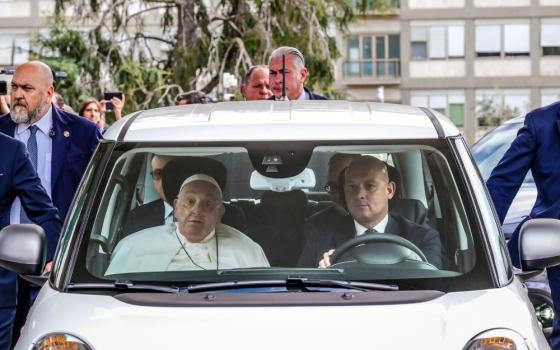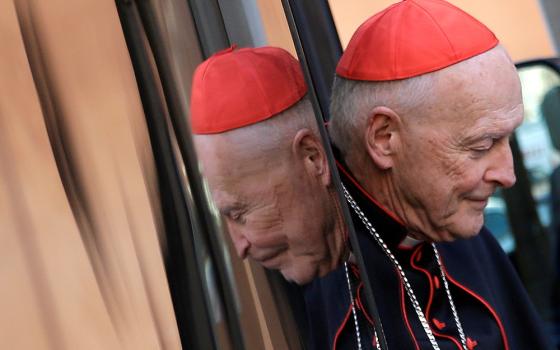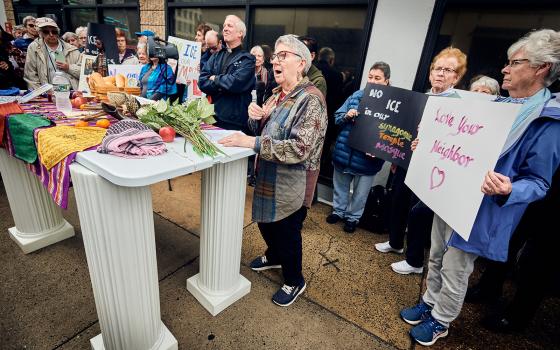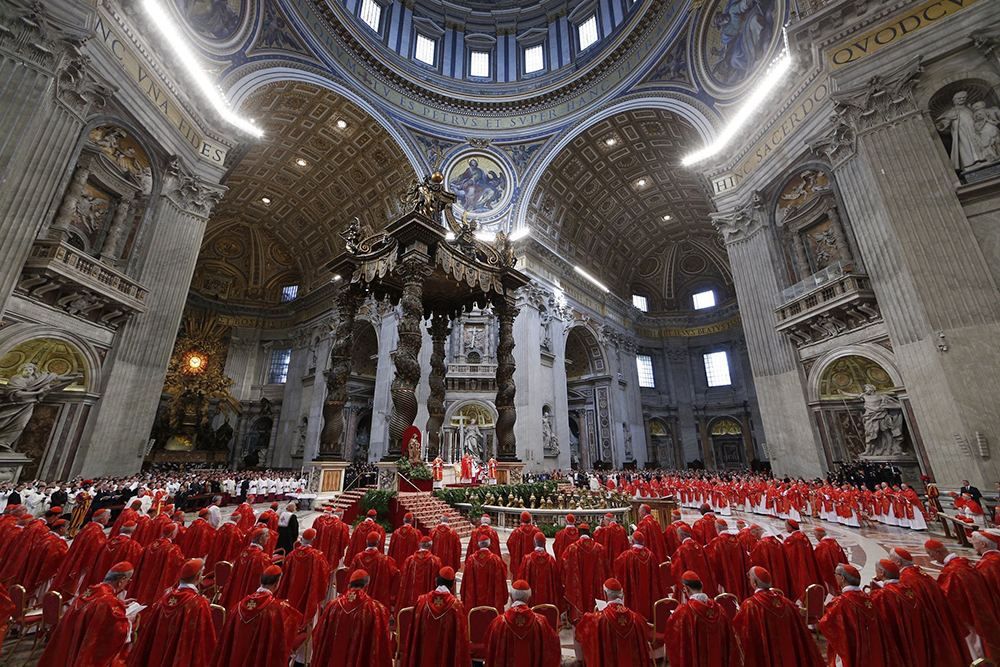
In this file photo, before entering the conclave, cardinals concelebrate Mass for the election of the Roman pontiff in St. Peter's Basilica at the Vatican March 12, 2013. (OSV News/CNS/Paul Haring)
For the 10th time, Pope Francis has appointed a new crop of cardinals, meaning that he has appointed about 80% of the cardinals who will elect the next pope.
Twenty-one cardinals will be created on Dec. 8, only one of which is over 80 years of age and therefore ineligible to vote in a conclave for the next pope. Of the 141 cardinals under 80 years of age after the Dec. 8 consistory, 111 will have been appointed by Francis, 24 by Pope Benedict XVI and six by Pope John Paul II.
Francis has revolutionized the College of Cardinals by passing over large archdioceses like Los Angeles, Venice and Milan in favor of picking men from the peripheries who reflect his pastoral orientation and concern for the poor.
The result will be a conclave very different from the one that elected him. It will be less Italian, less European and less curial but will be more Asian and African.
For the first time in history, a majority of the cardinals at the next conclave will be from outside of Europe, quite a change from the conclave that elected Pius XII in 1939, which was 89% European. More than half (56%) of the cardinals at that conclave were Italian.
Advertisement
The conclave that elected Francis in 2013 was 52% European, with 24% from Italy. If a conclave occurred immediately after the December consistory, it would be only 40% European, with the percent of Italians cut by more than half to 11%. Eastern Europe’s share of the college has also gone down slightly, with Western Europe growing to 22% from 19%.
Remember, John Paul favored his part of the world by increasing the number of Eastern European cardinals. The percentage of cardinals from Latin America, Pope Francis’ part of the world, has hardly changed, to 17% from 16%.
Meanwhile, the Asian contingent has grown to 18% from 9%, and Africa is up to 13% from 9%. The percentage from the United States is down slightly to 7% from 9% at the 2013 conclave.
Also noteworthy is the decline of curial cardinals as a percentage of the college, to 22% from 35%.
In the old days, if the curial and Italian cardinals were united behind a candidate, he was practically unstoppable. This is no longer true. Still, the curial cardinals will be very influential in a conclave because they tend to know most of the other cardinals, while the ones in the peripheries rarely meet the other cardinals.
The men chosen to become cardinals are also much younger than the current college. The average age of the current cardinal electors is 72, while the new cardinals’ average age is 62. Some are quite young. Bishop Mykola Bychok from Ukraine is only 44, while another six are in their 50s. These are likely to participate in a couple of conclaves before they turn 80.
In the old days, if the curial and Italian cardinals were united behind a candidate, he was practically unstoppable. This is no longer true.
Half of the new cardinals are members of religious orders, with Franciscans getting four red hats. No Jesuits, the pope’s religious community, were appointed cardinals. Nine of the new cardinals are members of the Synod on Synodality currently meeting in Rome.
Very little is known about some of the cardinals, but others are better known. Here are some interesting facts about some of the new cardinals.
- Dominican Timothy Radcliffe has been a key proponent of the synodal process initiated by Pope Francis.
- Archbishop Carlos Castillo Mattasoglio of Peru is a disciple of Gustavo Gutiérrez, a leading proponent of liberation theology.
- Archbishop Fernando Chomalí Garib has been a leading advocate in Chile for dealing with clerical sex abuse. He identifies as a “Palestinian descendant.”
- Tarcisio Isao Kikuchi, archbishop of Tokyo, is president of Caritas International, the confederation of Catholic aid agencies.
- Archbishop Pablo Virgilio Siongco David was a prominent critic of President Rodrigo Duterte’s war on drugs, who responded by charging him with sedition, libel and obstruction of justice.
- Archbishop Jean-Paul Vesco of Algiers wrote in La Croix about women deacons, “What seems unimaginable today will become natural tomorrow.”
- Archbishop Fabio Baggio, who works in the Vatican, has devoted his life to refugees and migrants.
- Archbishop Roberto Repole of Turin is a respected theologian who dared to include a critique of Benedict XVI in a collection of essays on the pope’s theology. He argues that theology should “be of service to the concrete people of God and to their living faith and maintain a lively dialogue with the culture of the contemporary world.”
- Rolandas Makrickas was put in charge of the Basilica of Saint Mary Major in Rome when the pope became frustrated with its financial mismanagement.
- Msgr. George Jacob Koovakad has overseen the pope’s international travels.
Although none of the new cardinals are from the United States, Bychok served in a Ukrainian parish in Newark before he became a bishop in Australia.
The new cardinals appear to be pastors loyal to the vision of Francis, but they are not just pastors. Many have doctorates in theology or biblical studies. One of them might be the next pope. They all will have a voice in choosing the next pope.
